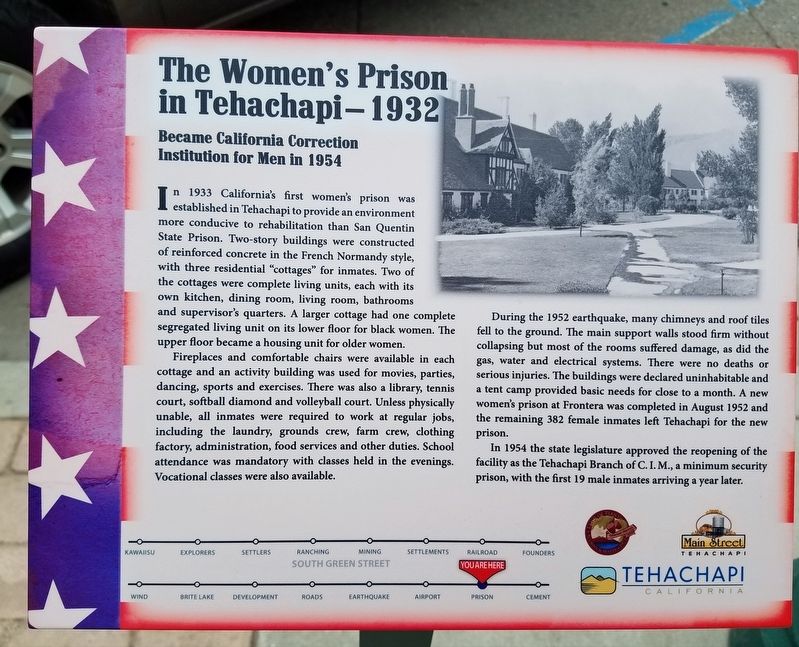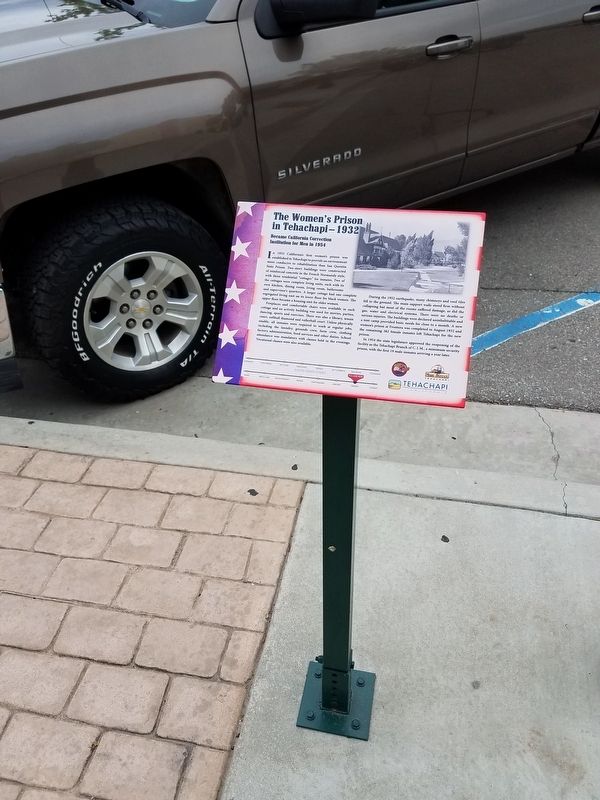Tehachapi in Kern County, California — The American West (Pacific Coastal)
The Women's Prison in Tehachapi - 1932
Became California Correction Institution for Men in 1954
Fireplaces and comfortable chairs were available in each cottage and an activity building was used for movies, parties, dancing, sports and exercises. There was also a library, tennis courts, softball diamond and volleyball court. Unless physically unable, all inmates were required to work at regular jobs, including the laundry, grounds crew, farm crew, clothing factory, administration, food services and other duties. School attendance was mandatory with classes held in the evenings. Vocational classes were also available.
During the 1952 earthquake, many chimneys and roof tiles fell to the ground. The main support walls stood firm without collapsing but most of the rooms suffered damage, as did the gas, water and electrical systems. There were no deaths or serious injuries. The buildings were declared uninhabitable and a tent camp provided basic needs for close to a month. A new women’s prison at Frontera was completed in August 1952 and the remaining 382 female inmates left Tehachapi for the new prison.
In 1954 the state legislature approved the reopening of the facility as the Tehachapi branch of C.I.M., a minimum security prison, with the first 19 male inmates arriving a year later.
Erected by Main Street Tehachapi, Tehachapi Heritage League and The City of Tehachapi.
Topics. This historical marker is listed in these topic lists: Architecture • Law Enforcement. A significant historical month for this entry is August 1952.
Location. 35° 7.883′ N, 118° 26.853′ W. Marker is in Tehachapi, California, in Kern County. Marker is on Green St, on the right when traveling north. Near the corner of F Street and Green Street. Touch for map. Marker is at or near this postal address: 122 S Green St, Tehachapi CA 93561, United States of America. Touch for directions.
Other nearby markers. At least 8 other markers are within walking distance of this marker. Site of Bank of Tehachapi (a few steps from this marker); The Railroad and the Tehachapi Loop (a few steps from this marker); Beekay Theatre (within shouting distance of this marker); Early Settlements in The Tehachapi Area (within shouting distance of this marker); Tehachapi Airport and Gliderport (within shouting distance of this marker); Cement Production in Tehachapi (within shouting distance of this marker); Monolith (within shouting distance of this marker); Tehachapi’s Founding Fathers (within shouting distance of this marker). Touch for a list and map of all markers in Tehachapi.
Credits. This page was last revised on October 26, 2022. It was originally submitted on May 28, 2019, by Denise Boose of Tehachapi, California. This page has been viewed 893 times since then and 77 times this year. Photos: 1, 2. submitted on May 28, 2019, by Denise Boose of Tehachapi, California. • Andrew Ruppenstein was the editor who published this page.

